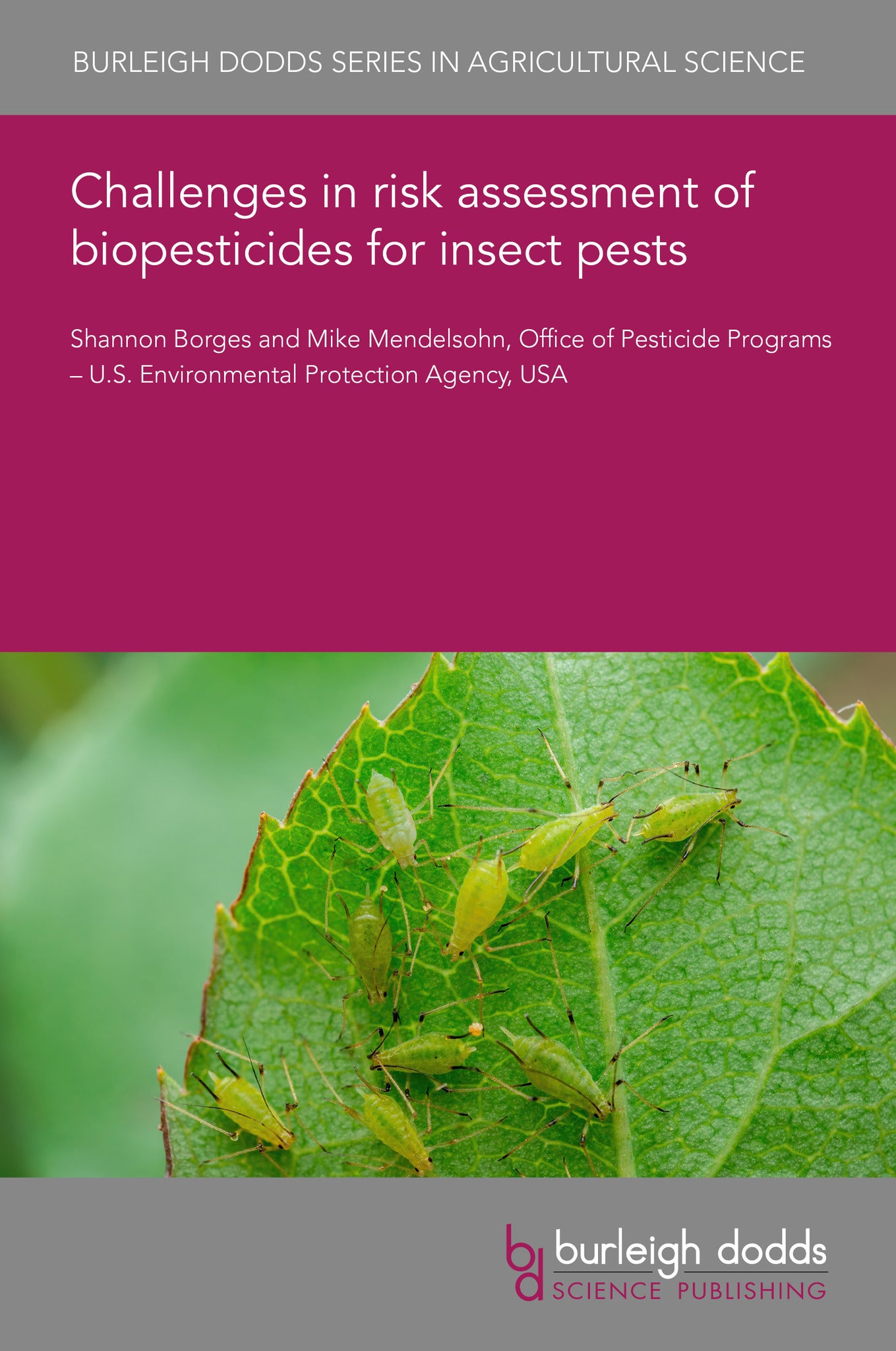We're sorry. An error has occurred
Please cancel or retry.
Challenges in risk assessment of biopesticides for insect pests

Some error occured while loading the Quick View. Please close the Quick View and try reloading the page.
Couldn't load pickup availability
- Format:
-
03 April 2025

Biopesticides are important tools for controlling insect pests, and demand for them is growing globally. While biopesticides are generally considered to be of low risk, robust risk assessments are still needed to support their registration. Addressing testing questions and challenges will help better refine environmental risk assessments by limiting the need for conservative assumptions and increasing our understanding and real world relevance of test results. This chapter identifies some of the common issues faced by regulators in assessing risks of microbial and biochemical pesticides as well as dsRNA pesticides. The chapter discusses problems related to identification, exposure analysis and hazard testing, especially in nontarget organism testing with microbial pesticides. Advancement in clarifying these issues will strengthen biopesticide risk assessments by increasing their resolution and decreasing the need for conservative assumptions.

TECHNOLOGY & ENGINEERING / Pest Control, Pest control / plant diseases, TECHNOLOGY & ENGINEERING / Agriculture / Sustainable Agriculture, TECHNOLOGY & ENGINEERING / Agriculture / Agronomy / Crop Science, Agronomy and crop production, Sustainable agriculture

- 1 Introduction
- 2 Biopesticide data requirements and problem formulation for risk assessment
- 3 Characterizing the active ingredient: biochemical pesticides
- 4 Characterizing the active ingredient: microbial pesticides
- 5 Challenges with exposure analysis: human health
- 6 Challenges with exposure analysis: non-target organisms
- 7 Improving guidance on use and labeling
- 8 Challenges with hazard testing: mammals
- 9 Challenges with hazard testing: non-target organisms
- 10 Risk assessment of double-stranded RNA (dsRNA) pesticides
- 11 Case study: non-target organism testing
- 12 Conclusion
- 13 Disclaimer
- 14 References



